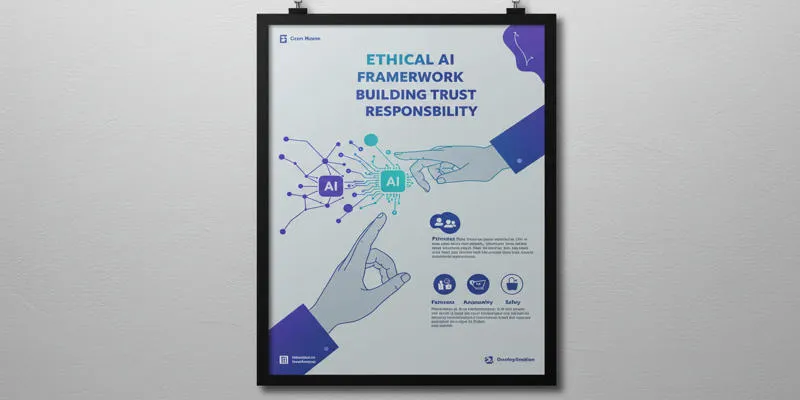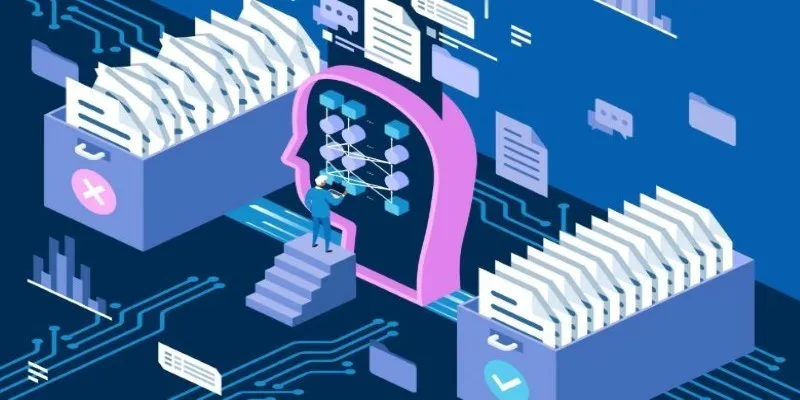Artificial intelligence (AI) systems increasingly influence significant decisions in sectors like banking, hiring, and healthcare. However, many AI models still reflect biases that result in unfair and harmful outcomes. Fixing this issue requires more than quick fixes; it demands a long-term solution rooted in ethical innovation. Researchers and organizations are working diligently to embed fairness at every stage of AI development and deployment to dismantle these harmful patterns.
As industries grow more reliant on automation, correcting bias becomes essential to maintaining public trust. A long-term approach to AI fairness ensures continuous improvement. Strengthened oversight and clearly defined accountability are key to developing responsible AI systems that are inclusive and equitable.

Understanding the Root Causes of AI Bias
AI bias often starts during the data collection process. Algorithms learn from historical data, allowing human prejudices to manifest. If AI systems learn from incomplete or biased data, they replicate and even amplify these biases. Many historical records, such as loan approvals or hiring choices, showcase trends that favor specific demographics, making it crucial to scrutinize datasets. Limited oversight or pressure for rapid deployment often causes developers to overlook bias.
If the data source is unchecked, AI bias persists. Some models trained on internet data, which often contains unchecked stereotypes, produce unfair outputs. Addressing the root causes involves reconsidering how training data is labeled, filtered, and collected. Active audits and a thorough data review process help identify weaknesses. Reducing bias in AI systems begins with using diverse and well-balanced datasets.

Building Transparency and Accountability in AI Models
Transparency and accountability are crucial in minimizing long-term damage caused by AI bias. Understanding AI decision-making processes fosters trust. Black-box models, being complex, present challenges in interpretability. Today, explainable AI is becoming the norm, allowing users to trust outcomes. Making models available for audits enables developers to identify biased outputs before public release. Documentation is also vital as it reveals expected results, data used, and those involved in training the model, aiding in avoiding unconscious biases.
It’s essential to monitor AI post-deployment. As AI adapts to new data, bias can shift, emphasizing the need for continuous ethical oversight. Businesses must allocate accountability, guiding developers to make informed decisions. Teams supporting responsible AI development set standards for fostering trust. Transparency cultivates confidence and enables AI tools to evolve in fair and safe directions.
Improving Dataset Diversity for Fair AI Outcomes
Achieving fair AI begins with diverse datasets. Training data that encompasses a broad spectrum of human experiences allows models to make better decisions. Problems often arise when datasets overlook gender and linguistic diversity or exclude minority groups. Inclusive data enables AI to respond accurately to varied user needs. Speech recognition systems, for instance, often struggle with dialects or accents not included in training data, necessitating the collection of voice samples from diverse populations.
Moreover, diversity in image datasets is crucial. AI in medical fields, trained primarily on light-skinned individuals, may fail to detect conditions in darker skin tones. Regular evaluations and expansions of datasets help enhance fairness. Avoiding sampling errors and ensuring true diversity is essential. Collaborating with affected communities and social scientists guides this process. Consistent efforts to improve data sources contribute to a long-term AI fairness strategy, resulting in systems that serve all users equitably.
Embedding Ethical Standards in AI Development
Adhering to clear ethical principles at every stage of the AI lifecycle is essential. From design to deployment, decisions should consider impact and fairness. Developers should apply ethical guidelines to evaluate biases and limit harm. These frameworks include user testing, stakeholder feedback, and fairness criteria, providing a roadmap for ethical innovation. Companies must invest in AI ethics education, equipping teams to identify and resolve ethical dilemmas. Ethical guidelines should address data security, privacy, and consent.
Safety becomes paramount when AI systems affect people’s lives directly. Thoughtful design decisions help prevent unexpected and harmful outcomes. Developers must conduct risk analyses before launching tools. Many businesses now require models to pass ethical checks before acceptance. These standards ensure that ethical innovation in AI systems becomes the norm, fostering a moral culture that creates tools respectful of every user.
The Role of Policy and Regulation in Reducing Bias
Strong policies and regulations are crucial in mitigating AI bias. Unchecked, AI systems can exacerbate existing socioeconomic disparities. Consequently, governments are drafting regulations to ensure fairness and transparency. New AI laws often require businesses to disclose model workings, facilitating easier reviews by watchdogs. Certain areas mandate audits for high-risk AI systems, such as those in healthcare or law enforcement, compelling developers to create more equitable tools.
Policies also promote research into fair AI development approaches. Increased funding for bias-related studies has sparked innovative and ethical design solutions. Public involvement in the legislative process adds another layer of trust. Those affected by biased AI can voice concerns and propose solutions. International regulations from organizations like the EU or OECD advance shared values, supporting global efforts toward long-term ethical innovation. Laws safeguard fairness and provide a safety net to protect consumers.
Fostering Collaboration for Sustainable AI Solutions
Addressing AI bias requires insights from multiple fields. Collaboration between data scientists, ethicists, sociologists, and domain experts is essential. Each group brings perspectives that enhance model fairness. For example, doctors and technologists can co-design medical AI tools to treat every patient equally. Tech firms should also engage with local communities impacted by AI systems.
User feedback can uncover hidden issues. Cross-industry alliances now share proven best practices, including transparency tools, fairness checklists, and model audit frameworks. Academic collaborations foster innovation through independent research. Both public and private sectors must commit to ethical AI. Together, they can establish a strong foundation for trust. Shared accountability shapes a long-term approach to AI fairness. When collaboration becomes the norm, the AI ecosystem becomes safer, fairer, and more resilient.
Conclusion
Fixing bias in AI systems requires an ethical, long-term strategy applied at every development stage. Fairness improves through diverse datasets, increased transparency, and clear ethical standards. Ethical innovation in AI systems builds trust between users and developers. Strong regulations support responsible AI development across industries. Collaboration among experts ensures bias is addressed from all angles. As AI becomes more integrated into daily life, it must treat everyone equitably. A long-term strategy for AI fairness paves the way for technology that promotes equality and inclusion.
For further reading on responsible AI systems, visit Hugo’s AI Innovation Blog.
 zfn9
zfn9























